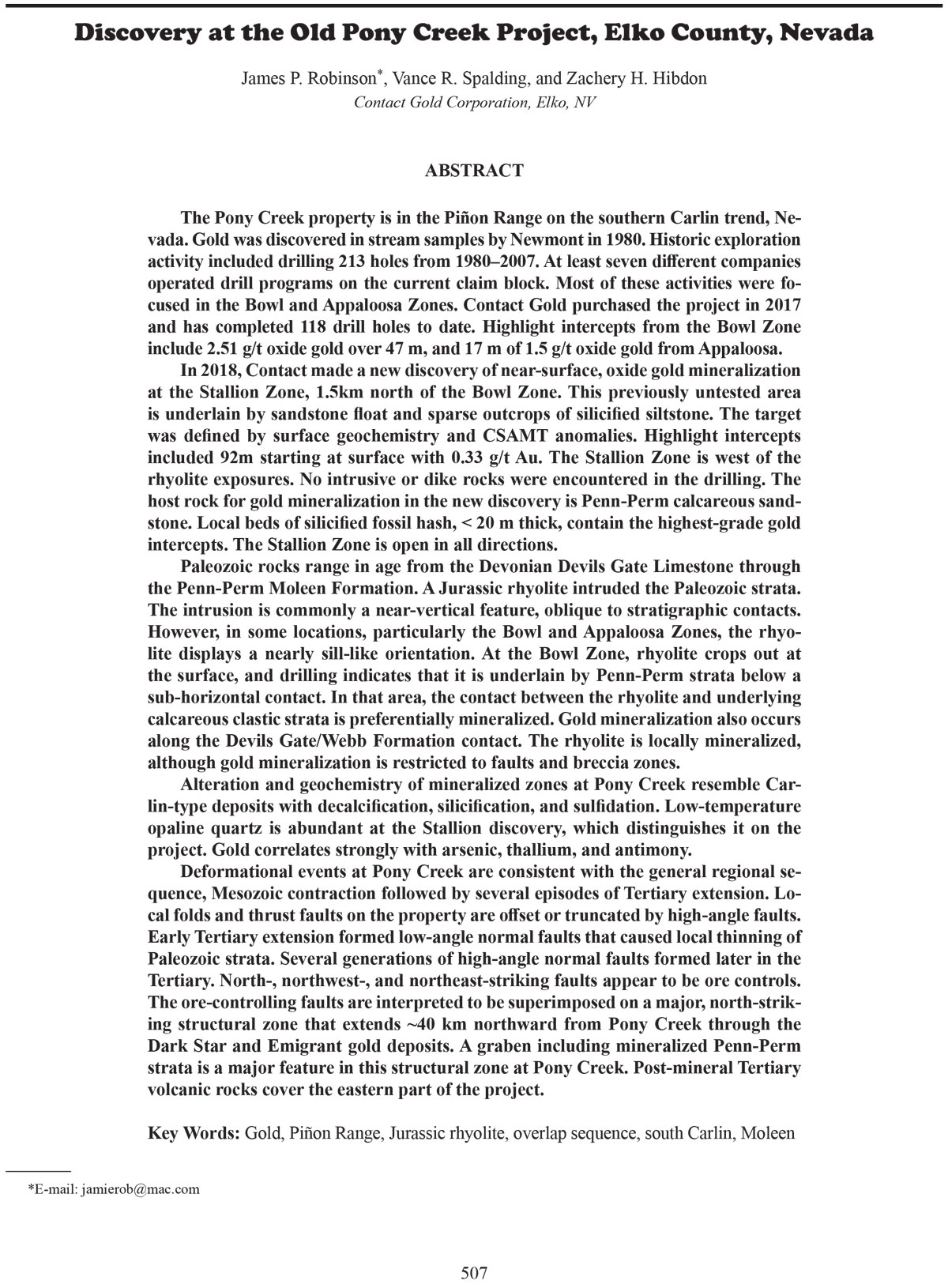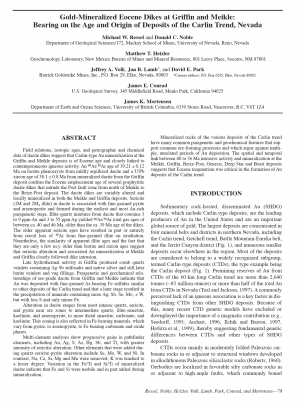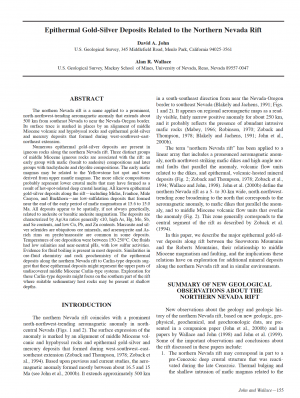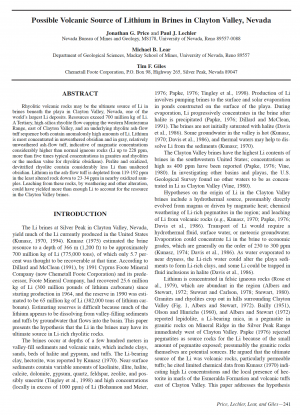Description
The Pony Creek property is in the Piñon Range on the southern Carlin trend, Nevada. Gold was discovered in stream samples by Newmont in 1980. Historic exploration
activity included drilling 213 holes from 1980–2007. At least seven different companies
operated drill programs on the current claim block. Most of these activities were focused in the Bowl and Appaloosa Zones. Contact Gold purchased the project in 2017
and has completed 118 drill holes to date. Highlight intercepts from the Bowl Zone
include 2.51 g/t oxide gold over 47 m, and 17 m of 1.5 g/t oxide gold from Appaloosa.
In 2018, Contact made a new discovery of near-surface, oxide gold mineralization
at the Stallion Zone, 1.5km north of the Bowl Zone. This previously untested area
is underlain by sandstone float and sparse outcrops of silicified siltstone. The target
was defined by surface geochemistry and CSAMT anomalies. Highlight intercepts
included 92m starting at surface with 0.33 g/t Au. The Stallion Zone is west of the
rhyolite exposures. No intrusive or dike rocks were encountered in the drilling. The
host rock for gold mineralization in the new discovery is Penn-Perm calcareous sandstone. Local beds of silicified fossil hash, < 20 m thick, contain the highest-grade gold
intercepts. The Stallion Zone is open in all directions.
Paleozoic rocks range in age from the Devonian Devils Gate Limestone through
the Penn-Perm Moleen Formation. A Jurassic rhyolite intruded the Paleozoic strata.
The intrusion is commonly a near-vertical feature, oblique to stratigraphic contacts.
However, in some locations, particularly the Bowl and Appaloosa Zones, the rhyolite displays a nearly sill-like orientation. At the Bowl Zone, rhyolite crops out at
the surface, and drilling indicates that it is underlain by Penn-Perm strata below a
sub-horizontal contact. In that area, the contact between the rhyolite and underlying
calcareous clastic strata is preferentially mineralized. Gold mineralization also occurs
along the Devils Gate/Webb Formation contact. The rhyolite is locally mineralized,
although gold mineralization is restricted to faults and breccia zones.
Alteration and geochemistry of mineralized zones at Pony Creek resemble Carlin-type deposits with decalcification, silicification, and sulfidation. Low-temperature
opaline quartz is abundant at the Stallion discovery, which distinguishes it on the
project. Gold correlates strongly with arsenic, thallium, and antimony.
Deformational events at Pony Creek are consistent with the general regional sequence, Mesozoic contraction followed by several episodes of Tertiary extension. Local folds and thrust faults on the property are offset or truncated by high-angle faults.
Early Tertiary extension formed low-angle normal faults that caused local thinning of
Paleozoic strata. Several generations of high-angle normal faults formed later in the
Tertiary. North-, northwest-, and northeast-striking faults appear to be ore controls.
The ore-controlling faults are interpreted to be superimposed on a major, north-striking structural zone that extends ~40 km northward from Pony Creek through the
Dark Star and Emigrant gold deposits. A graben including mineralized Penn-Perm
strata is a major feature in this structural zone at Pony Creek. Post-mineral Tertiary
volcanic rocks cover the eastern part of the project.





